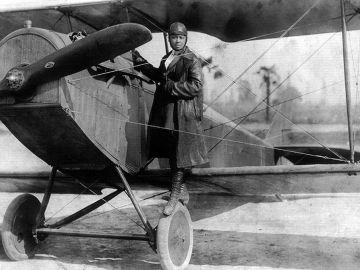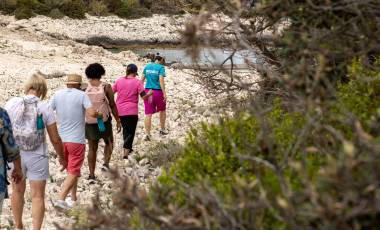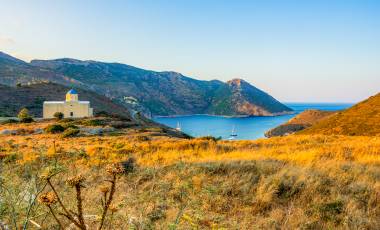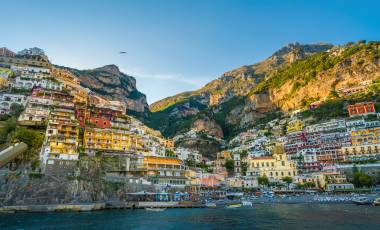Read time – 7 minutes
In honour of International Women’s Day, we’re celebrating some of history’s boldest female travellers. Within the dusty tomes of the past, lie the stories of some incredible women: female explorers, trekkers and pioneers who have changed the way we see our planet.
They have navigated wide oceans, made tracks through barren deserts, broken records and smashed preconceptions. Even when the odds were stacked against them, these tenacious ladies made history.
And they were pretty feisty while they did it, too. So as Victorian ‘world pilgrim’ Mary Hall would say: “Take every precaution and abandon all fear.” These are just some of our historic travelling heroines, who certainly knew a thing or two about being bold.
The Greatest Female Explorers
Isabella Bird (1831 – 1904)
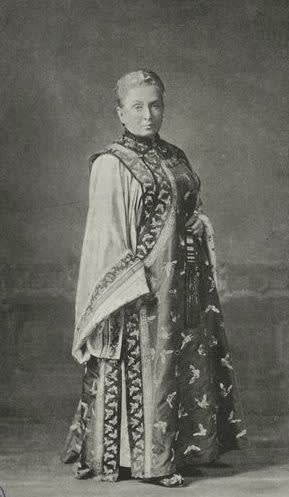 Isabella Bird
Isabella Bird
Isabella Bird was a fierce and fantastic woman, never one to refrain from speaking her mind, and she became the first woman to ever to be elected Fellow of the Royal Geographical Society.
It seems doubtful the sneers of male contemporaries claiming this would turn the RGS into a “tea-party” deterred her at all. Her travels began under a doctor’s recommendation that she travel to improve her ailing physical health, which had been troublesome since childhood.
Her descriptive letters were so vivid that her family collected them into a published work. This pattern formed the basis of the rest of her life, and her accounts and vivid character portraits of her companions earned her fame. She travelled throughout the USA, Canada and huge swathes of Asia.
Following the death of her husband, and now well into her sixties, she continued to travel in style. With characteristic flair and determination she crossed Morocco on a majestic black stallion, a gift from the Sultan, regardless of needing a ladder to mount it.
Annie Smith Peck (1850-1935)
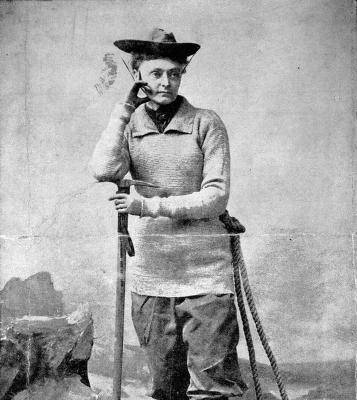 Annie Smith Peck
Annie Smith Peck
Mountaineering expert Annie Smith Peck had already approached her forties before she discovered the joys of trekking, but she took her duties on ‘make up on lost time’ very seriously. She became the third woman to scale the technical peak of the Matterhorn, an ascent so difficult the mountain still claims lives today.
Her greatest achievement was at the age of 58 when she became the first person to climb what was then believed to be the highest mountain in South America, Mount Nevado Huascarán (6768m).
Fanny Bullock Workman (1859-1925)
 Fanny proudly hoisting her suffragette poster on the Silver Throne Plateau, Karakorum Mountains
Fanny proudly hoisting her suffragette poster on the Silver Throne Plateau, Karakorum Mountains Mountaineer, explorer, geographer and cartographer, Workman was not one to be messed with. On her many snowy sojourns to the Himalaya, eight expeditions in the space of 14 years, she and her husband not only climbed these mighty mountains but also helped map them.
Her cartography skills earned her a place as one of the first women to be accepted by members of the Royal Geographical Society of London, but it was her daring nature and ambition which earned her the Woman’s Altitude Record for reaching the summit of Pinnacle Peak in 1906.
She was known amongst her contemporaries for her insistence on precision in the recording of mountains and she gained a lasting reputation for competitiveness and meticulousness in her endeavours.
Nellie Bly (1864-1922)
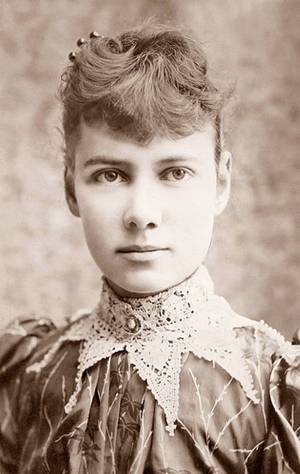 Nellie Bly
Nellie Bly
Jules Verne may have written the novel ‘Around the World in 80 Days’ but it was Nellie Bly, a pioneering journalist, who actually managed it – circling the globe in 72 days and 6 hours.
The American investigative journalist quickly made a name for herself with her bold undercover reports on social injustice, but it was her round-the-world jaunt which launched her to international fame. The journey, via steamship, railroad, horse and rickshaw to name but a few modes of transport, was considered so unfeasible and unsafe for an unchaperoned woman (who would carry her huge suitcase full of pretty dresses? Who would look after the finances for her?) that her editors wanted to send a male journalist on the assignment, even though it was Bly’s idea.
She was having none of that. Her response? “Very well,” I said angrily, “Start the man, and I’ll start the same day for some other newspaper and beat him.” Needless to say, she got the job.
Annie Londonderry (1870-1947)
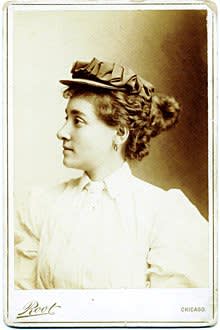 Annie Londonderry
Annie Londonderry
Born Annie Cohen Kochovsky in modern-day Latvia, Londonderry was the first lady to cycle around the world – just to win a bet. Whilst it may sound like a daft publicity stunt to modern ears, it was nothing short of a cry for revolution in her day, when the idea of a 24-year-old mother of three taking off to pursue her own dreams was unthinkable.
To fund her stunt, she transformed herself into a cycling billboard, charging companies to advertise as she rode. By all accounts she thrived on the fame and publicity, taking great joy in fooling the press with preposterous origin stories about herself, thus distinguishing herself as one of the dangerous breed of the “New Woman” phenomenon.
“I am a journalist and ‘a new woman,’” she wrote, “if that term means that I believe I can do anything that any man can do.”
Bessie Coleman (1892 – 1926)
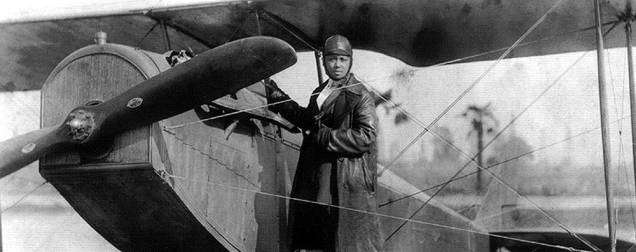 Bessie Coleman
Bessie Coleman
Bessie was an unstoppable force and a heroine of early aviation, and her story is only the more incredible for the intensity of the obstacles she had to overcome. She began life very poor, working in the cotton fields of segregated Texas and struggling to receive an education.
Despite saving for university, she was forced to drop out after just one term when the money ran out. She moved to Chicago where she decided to become a pilot, but as neither women nor African-Americans were permitted to attend flight school in America, she was barred on two counts. Bessie was having none of that.
Undeterred by this extreme prejudice, or the lack of wealth that helped most other civil pilots, she found a sponsor, learned French and moved to Paris where she earned both her aviation pilot’s license and her international aviation licence in just eight months – the first African-American woman to do so.
She returned to the US and earned her name as “Queen Bess”, aviatrix and stunt pilot extraordinaire, known for her daring and talent and performing for huge crowds and thunderous applause. She dreamed of opening her own pilot’s school, but her life was cut tragically short when she died in a plane crash. Her legacy lives on not just as a trailblazing pilot, but as an inspirational figure for African-American women.
Amelia Earhart (1897 – declared missing 1937)
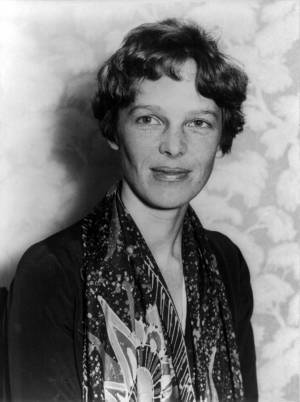 Amelia Earheart
Amelia Earheart
Ambitious Amelia was never going to be anything other than extraordinary. She always yearned for adventure, as a child keeping a scrapbook of newspaper cuttings of eminent women. During the First World War, she leapt at the chance to train as a nurse’s aide, alongside a host of young women hoping to break out of their prescribed social mould.
It was then that she was first captivated by the idea of flight. Within a few years, she had bought her own plane and earned her pilots licence, quickly gaining a celebrity status as a female aviator, which she used to help other women in aviation, acting as president for the 99s, an international organisation promoting female pilots.
Her most famous feat was her 1932 transatlantic flight when she became the first woman to fly solo nonstop across the Atlantic. She undertook numerous ground-breaking flights before her craft was tragically lost on the around-the-world attempt. She, her navigator, and her aeroplane were never found.
Annemarie Schwarzenbach (1908-1942)
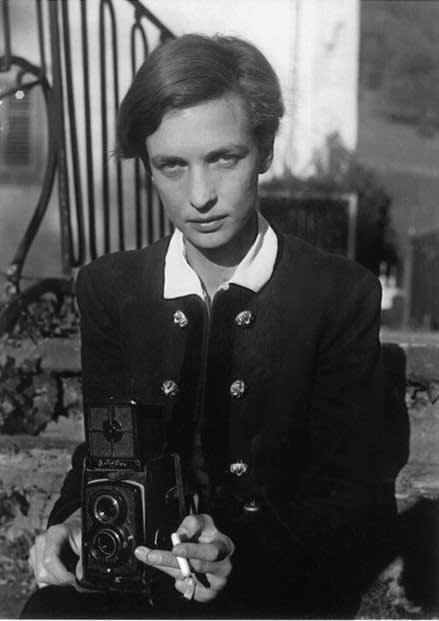 Annemarie Schwarzenbach
Annemarie Schwarzenbach
Born in Switzerland near the shores of Lake Zurich, Annemarie escaped her conservative upbringing and moved to bohemian Berlin after a brief love affair with Erika Mann ended in disappointment.
As the rise of fascism began to take hold of Germany, she began her travels in earnest, and her photo-journalism during this period documented the increasingly turbulent political time across Europe. Despite pressure from her parents to support Hitler and the Third Reich, she stayed true to her principles, later going on to briefly help rehome refugees in the USA in the 1940s.
Hers was a life of constant movement, and she was known to buy a cheap car and head off into the sunset, journeying through such varied countries as Turkey, Afghanistan, Turkmenistan, Russia, the USA and what was then the Belgian Congo and Persia.
She struggled with severe mental health problems and drug addiction for most of her life, including attempts on ending her own life, but never let these problems hold her back from her work or her travels – or, reportedly, seducing the daughter of the Turkish ambassador to Tehran. She was a hugely prolific author, from books to articles and photo essays published in newspapers from many different countries.
Junko Tabei (1939 – 2016)
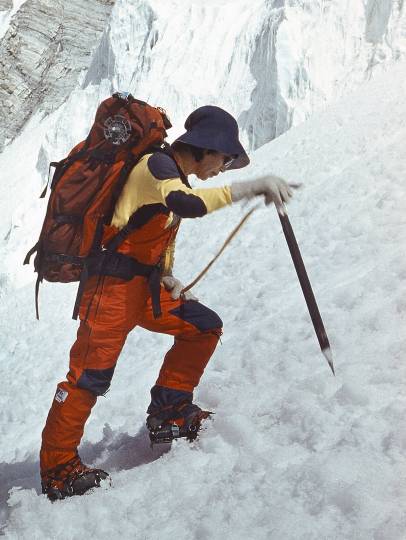 Junko Tabei
Junko Tabei
Never one to hog the limelight, Junko Tabei was nonetheless an inspirational, determined woman. She founded the Ladies Climbing Club: Japan – not to find a husband, despite whatever dismissive male climbers supposed during the sixties, but with the goal of “[going] on an overseas expedition by ourselves”.
Tabei far exceeded these dreams during her mountaineering career – she was the first woman to summit Everest in 1975, and the first to achieve the Seven Summits, the highest mountains on every continent, which she completed in 1992.
She not only created a new environment to support women climbers in a hyper-masculine sphere, but she also helped protect and preserve the environments climbers enjoyed, leading ‘clean-up climbs’ all over the world to clear rubbish left by less concerned climbers.
All images sourced from Wikimedia Commons.
If you’ve been inspired by these incredible female travellers, browse our female only departures below.
